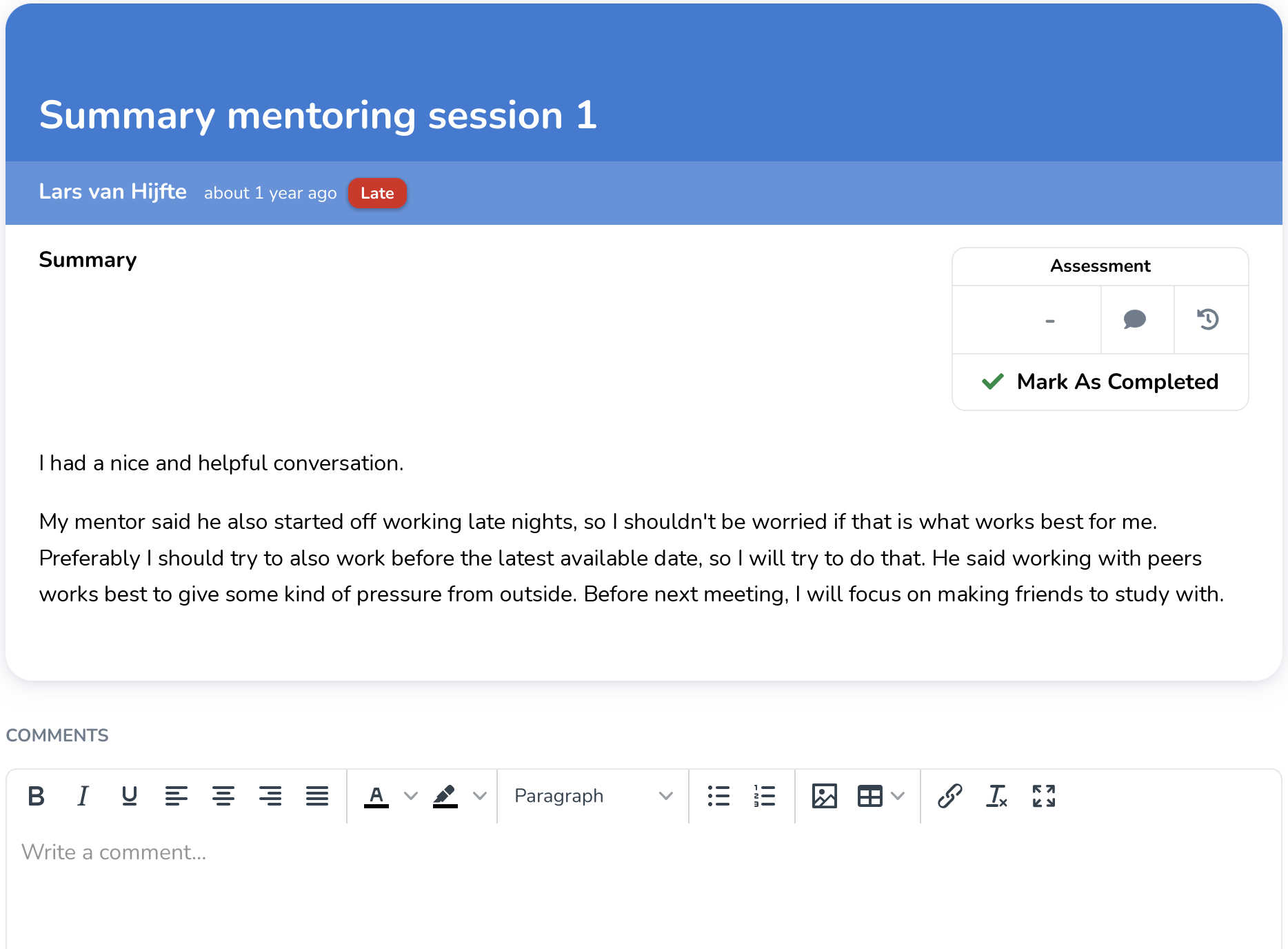Entries
Learn more about Journal entries.
Individual pieces of content within a journal are called entries. The structure of an entry is defined according to a template. Entries may be configured with a deadline. For each individual entry, teachers are able to provide a grade and feedback.
An example of what a posted entry looks like as a teacher is given below.

Templates
Templates allow teachers to define the desired outline of a student's entry. A template consists of a set of fields, each representing a type of content (text, image, etc), possibly accompanied by a question or remark. Students use templates as a blueprint for their entries in their journals, where they provide content for each field.
Submission information
Extra information about the entry is presented below the title of the entry. Here you will find the moment the entry was submitted or edited and by whom.
Assessment
Teachers can assess entries using any combination of the following:
- Numeric grade: this will overwrite an optionally added rubric.
- Rubrics: teachers are able to provide an assessment by filling in a rubric.
- Textual feedback
- Mark as completed: Instead of textual or numeric feedback, teachers can opt to mark entries as "completed". This will result in a simple checkmark (✓) for the student, acknowledging that the entry has been completed.
Warning
Graded entries are no longer editable by students.
The example below shows an entry being graded using both a rubric and textual feedback.

Learn more about assessing entries
Users might also receive feedback by e.g.: sharing a journal for feedback, a peer feedback activity, or a simple comment on an entry. The important distinction between an assessment and feedback is that an assessment is formal. It is up to the teacher to whether they want to take feedback into consideration when providing a formal assessment
Drafts
New entries always start as a draft. Drafts are only visible to the authors of a journal, and any updates to a draft are automatically saved.
Once a draft is finished, it can be submitted. Submitted entries are visible to teachers, and can receive feedback or be assessed.
A submitted entry can always be converted to a draft to incorporate feedback or make changes. However, an entry submission is final (and thus cannot be converted to a draft anymore) once it has received a grade.
How do I know if I am working on draft?
If you are making changes to your entry, you are working on a draft.
The entry status in the timeline will hold a draft badge.
At the top of the entry you will find a draft banner.
